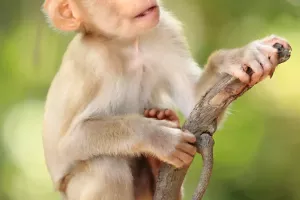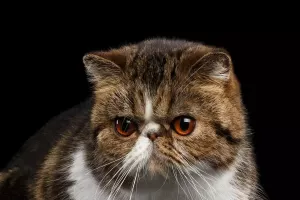Generally speaking, birds fly forward, but have you heard of birds that fly backwards? In the Amazon jungle, there lives such a bird that can fly upside down, it is the hummingbird. As the smallest bird in the world, the hummingbird's body is only slightly larger than that of a bee, with a body length of no more than 5 centimeters and a weight of only about 2 grams, so it needs less lift.
Hummingbirds are solitary animals, pairing only during the breeding season. Many species of male hummingbirds are territorial, with males striving to guard areas centered on food sources. The male bird usually perches in a conspicuous position to observe around. If an intruder invades the territory, the male bird will issue a warning and hover in the air to flash iridescent feathers to drive away the intruder if necessary.
About 90 percent of a hummingbird's food comes from nectar, with the remainder being arthropods, including flies, wasps, spiders, beetles, and ants. Their thin, long beaks are great for picking up nectar. Hummingbirds, whose bodies are usually brightly colored, use their long tubular beaks to pollinate flowers. The shape of a hummingbird's beak determines the variety of flowers they can eat.
Hummingbirds have an ability that other birds don't have. They can stay almost completely in the air. The hummingbird's wings are short and powerful, flapping at a speed of 15 to 70 times per second, so it has magical flying stunts, able to fly backwards, or stay in the air, and lift vertically like a helicopter.
Why do hummingbirds have this ability? On the one hand, because of his light body, on the other hand, because hummingbirds are accustomed to eating the nectar in the stamens and the small insects hiding in the center of the flowers, these flowers are generally too small and very delicate. If the hummingbird stops at On the flower, the flower will not be able to support its weight. So the hummingbird had to develop its strange wings. When the hummingbird's wings vibrated extremely fast, people could only see a gray fog in front of them.
Hummingbirds also have a great ability to quickly enter a dormant state. To save energy on cold nights, hummingbirds go into a dormant state. During the dormant period, their body temperature drops by 20-30°C, their heart rate drops to 50 beats per minute, and their breathing becomes irregular. Most birds are too large to take advantage of hibernation to save energy. Because after the hibernation is over, it is too time-consuming and energy-consuming to warm up their huge bodies. It only takes 1 hour for hummingbirds to end their dormant state, and if they are disturbed during this period, they will not return to their normal state immediately.
Because the feathers of hummingbirds are very gorgeous, in the 19th century, European and American women often used hummingbird feathers as hat ornaments, and merchants purchased hummingbird skins, which posed a great threat to the survival of hummingbirds. In modern society, with the deforestation and the development of farming, the habitats that hummingbirds rely on are gradually destroyed by humans, and some hummingbirds are also facing the danger of extinction.


